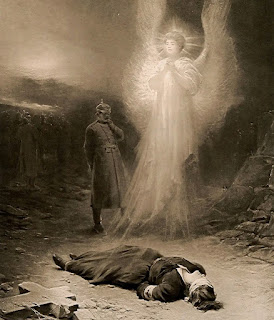John Riley - wife murderer.36 year old Riley had been married to his wife, Alice, for around 12 years. They had two or three children and the family lived in Grimsby.
Riley was rarely in work and frequently maltreated Alice, causing her to leave him and move across the Humber river and live in Hull.
Riley visited her there from time to time and they got back together and rented a room in a lodging house at Mariner’s Yard in Blackfriars’s Gate in Hull.
It seems that he forced Alice into prostitution and on one occasion was convicted of an assault on her which earned him a one month prison sentence.
Riley left Hull to look for work, returning a week or so later with a little money which was soon spent on alcohol.
On the afternoon of Sunday the 3rd of July 1859 Alice had gone to bed having had a lot to drink.Riley sent his eight year old son out to play and locked the front door.
He then cut Alice’s throat as she lay sleeping and attempted to hang himself.The little boy returned home two hours later and finding the door locked raised the alarm.
A constable was able to force the door and discovered Alice’s body and Riley suspended by a cord around his neck. He was cut down and made a recovery and a statement acknowledging his guilt.
He was therefore charged with Alice’s murder.
He came to trial on the 18th of July at York, before Mr. Justice Hill. Given his statement to the police he was quickly found guilty.
Riley was hanged by Thomas Askern at noon at York Castle on Saturday the 6th of August before a crowd estimated at 7,000 people, including a lot of young women.
He was reportedly very penitent and spent some time in prayer with the Rev. T. Myers. The chaplain, the Rev. J. C. Thompson, administered the Sacrament.
A few minutes before noon, the Under Sheriff, Mr. W. Gray, demanded his body and Riley was pinioned by Askern.
The procession to York’s portable gallows formed up, consisting of Mr. Gray, the governor and under governor, the two clergymen, several turnkeys, Riley and Askern. Shortly after midday Riley was launched into eternity, becoming still after two minutes.
As was usual he was left on the rope for an hour before being taken down and buried in the Castle cemetery.











